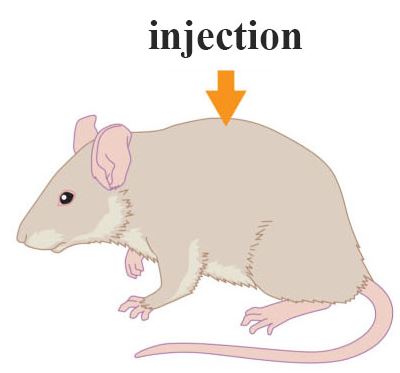Exam 8: DNA Structure and Function
Exam 1: Invitation to Biology79 Questions
Exam 2: Life's Chemical Bases67 Questions
Exam 3: Molecules of Life87 Questions
Exam 4: Cell Structure106 Questions
Exam 5: Ground Rules of Metabolism69 Questions
Exam 6: Where it Starts—Photosynthesis69 Questions
Exam 7: How Cells Release Chemical Energy75 Questions
Exam 8: DNA Structure and Function61 Questions
Exam 9: From DNA to Protein64 Questions
Exam 10: Control of Gene Expression63 Questions
Exam 11: How Cells Reproduce77 Questions
Exam 12: Meiosis and Sexual Reproduction59 Questions
Exam 13: Observing Patterns in Inherited Traits95 Questions
Exam 14: Chromosomes and Human Inheritance76 Questions
Exam 15: Studying and Manipulating Genomes58 Questions
Exam 16: Evidence of Evolution55 Questions
Exam 17: Processes of Evolution74 Questions
Exam 18: Organizing Information about Species46 Questions
Exam 19: Life's Origin and Early Evolution60 Questions
Exam 20: Viruses, Bacteria, and Archaea56 Questions
Exam 21: Protists: The Simplest Eukaryotes61 Questions
Exam 22: The Land Plants66 Questions
Exam 23: Fungi52 Questions
Exam 24: Animal Evolution: The Invertebrates74 Questions
Exam 25: Animal Evolution: The Chordates71 Questions
Exam 26: Human Evolution51 Questions
Exam 27: Plant Tissues96 Questions
Exam 28: Plant Nutrition and Transport69 Questions
Exam 29: Life Cycles of Flowering Plants89 Questions
Exam 30: Communication Strategies in Plants72 Questions
Exam 31: Animal Tissues and Organ Systems79 Questions
Exam 32: Neural Control97 Questions
Exam 33: Sensory Perception69 Questions
Exam 34: Endocrine Control90 Questions
Exam 35: Structural Support and Movement72 Questions
Exam 36: Circulation58 Questions
Exam 37: Immunity73 Questions
Exam 38: Respiration78 Questions
Exam 39: Digestion and Nutrition98 Questions
Exam 40: Maintaining the Internal Environment73 Questions
Exam 41: Animal Reproductive System105 Questions
Exam 42: Animal Development72 Questions
Exam 43: Animal Behavior74 Questions
Exam 44: Population Ecology59 Questions
Exam 45: Community Ecology71 Questions
Exam 46: Ecosystems64 Questions
Exam 47: The Biosphere73 Questions
Exam 48: Human Impacts on the Biosphere67 Questions
Select questions type
Extracts of pathogenic bacteria can transform harmless bacteria to harmful bacteria unless ____ enzymes are added to the extract.
Free
(Multiple Choice)
5.0/5  (24)
(24)
Correct Answer:
D
A _____ is an image of an individual cell's chromosomes arranged by size,length,shape,and centromere location.
Free
(Multiple Choice)
4.8/5  (40)
(40)
Correct Answer:
A
Which technique did Rosalind Franklin use to determine many aspects of DNA's structure?
(Multiple Choice)
4.8/5  (32)
(32)
Choose the one most appropriate answer for each.
-Hershey and Chase
(Multiple Choice)
4.8/5  (33)
(33)
Which of the following statements is true regarding cloning techniques?
(Multiple Choice)
4.8/5  (35)
(35)
Classification. Answer the following questions in reference to the five nucleotides listed below.
-Erwin Chargaff's data indicates that within a species,the amount of adenine is always equal to the amount of this nucleotide.
(Multiple Choice)
4.8/5  (35)
(35)
Answer the following questions about Griffith's experiments involving Streptococcus pneumoniae.  Figure 8.3
-If an injection to the mouse contains live R strain and heat-killed S strain Streptococcus pneumonia,____.
Figure 8.3
-If an injection to the mouse contains live R strain and heat-killed S strain Streptococcus pneumonia,____.
(Multiple Choice)
4.8/5  (41)
(41)
Classification. Answer the following questions in reference to the five nucleotides listed below.
-This nucleotide is a double-ring molecule.
(Multiple Choice)
4.8/5  (27)
(27)
About how many base pairs are there in the DNA of human cells?
(Multiple Choice)
4.8/5  (41)
(41)
Which structures have the same length,shape,and centromere location?
(Multiple Choice)
4.8/5  (41)
(41)
Classification. Answer the following questions in reference to the five nucleotides listed below.
-If one chain of a DNA molecule has a purine at a given position,this nucleotide complements it on the other chain.
(Multiple Choice)
4.8/5  (34)
(34)
Which discovery was determined about DNA from x-ray diffraction data?
(Multiple Choice)
4.7/5  (35)
(35)
The process by which an animal's embryonic cells specialize into specific cell types is called____________.
(Multiple Choice)
4.9/5  (40)
(40)
A bacterium,containing one circular DNA chromosome,undergoes four rounds of replication.How many new strands of DNA would result?
(Multiple Choice)
4.8/5  (34)
(34)
Which of the following is not a factor that increases mutations?
(Multiple Choice)
4.9/5  (32)
(32)
Classification. Answer the following questions in reference to the five nucleotides listed below.
-This nucleotide is not incorporated into the structure of the DNA helix.
(Multiple Choice)
4.8/5  (43)
(43)
____ discovered the basis for the ____ rule,which states that the amounts of adenine and thymine are identical,as are the amounts of cytosine and guanine.
(Multiple Choice)
4.8/5  (39)
(39)
Showing 1 - 20 of 61
Filters
- Essay(0)
- Multiple Choice(0)
- Short Answer(0)
- True False(0)
- Matching(0)